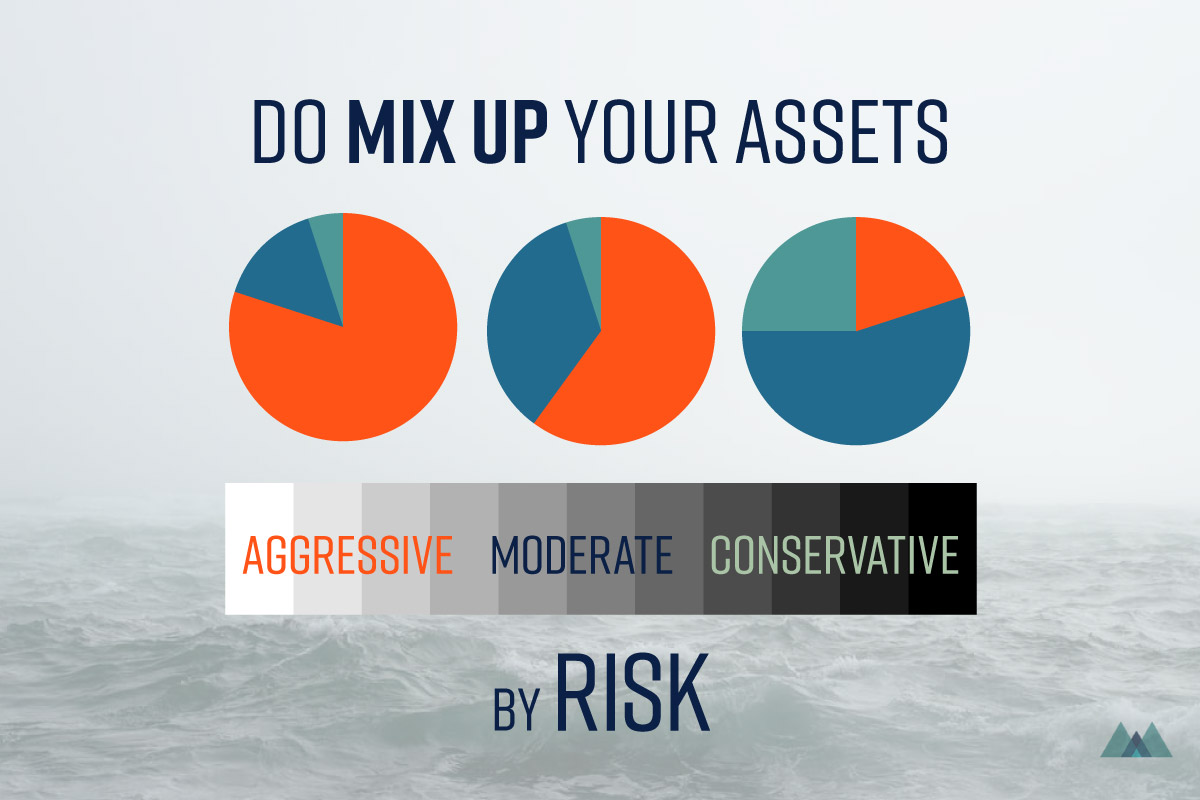What’s the Asset Mix
Unless you want to get technical, basic portfolio design is about how to mix up assets (it’s called “asset allocation”). Remember higher returns usually involves higher risk. The fundamental idea is that stocks are considered high risk and high return assets while bonds and cash equivalents are low risk and low return assets. Depending on how you mix up assets, the level of risk and target return changes.
Let’s say an aggressive portfolio includes 80% of stocks and 20% bonds and cash to target 12% return a year. A conservative portfolio would include 20% of stocks and 80% for the safer assets and target 3% annual return instead.
Choose the Right Asset Mix
There are basic factors when choosing the right asset mix. If the portfolio is big, or if the investor has a particular interest, there are more considerations to make.
- Timeframe: those who want to earn returns quickly for short-term financial goals should invest in less risky financial products. Riskier financial products, which have a higher rate of return, require a longer timeframe (often more than 5 years) to grow because it has more buffer space for fluctuations. It’s related to risk capacity - your ability to absorb losses without affecting your lifestyle.
Investors who are closer to their retirement age are usually advised to invest less aggressively. Younger investors could take more risks on the stock market since 10-year average returns have turned out better than other investments. - Purpose: investment for fast-approaching and important events can be chosen more conservatively.
An education fund for your child’s tuition next year should involve less risk than a vacation fund sometime later. - Asset types: all assets have different pros and cons, and choosing the financial products that fit your goals are important.
If you are designing a portfolio with diversified products such as mutual funds and ETFs, check that they include various assets with low correlation to each other. - Budget: depending on how much and how often you invest, you can set different strategies to save time and cost.
Experts recommend to keep a small portfolio simple until the portfolio grows. An education fund under a 50K contribution may not need 10 ETFs inside.
If you want to invest, but do not have a lot of money right now, it’s possible to choose products that allow small monthly contributions, even of $25.

Time's up

